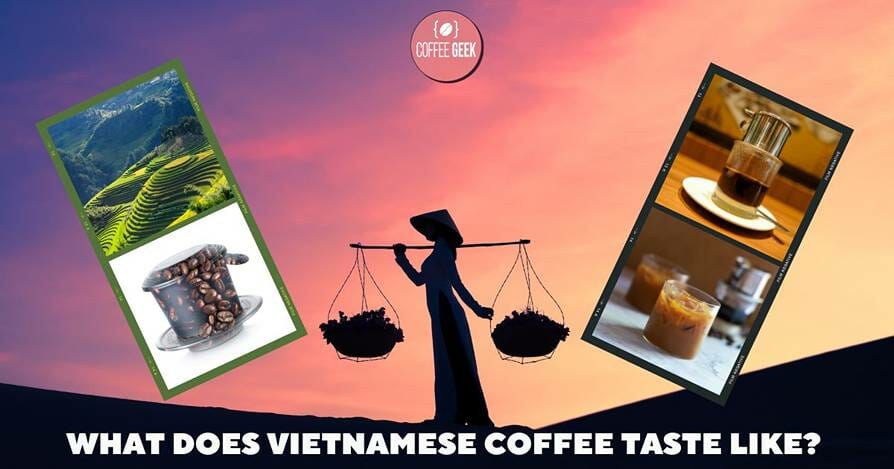Vietnamese coffee offers a unique taste that sets it apart from others. Known for its bold flavor and sweet finish, this coffee has gained quite a fan following.
What does Vietnamese coffee taste like?
When served traditionally, Vietnamese coffee showcases a perfect balance of bitter and sweet notes, largely attributed to the specific type of beans and brewing process utilized in Vietnam.
Dark roasted Robusta beans are central to Vietnamese coffee taste, contributing to its earthy, slightly bitter flavor profile.

The dark roast brewing technique of using a Phin, a small metal filter drip, adds strength to the coffee while sweetened condensed milk delivers a delightful sweetness.
Together, these elements come together to form the distinct taste that many people around the world have come to appreciate.
Key Takeaways
- Vietnamese coffee is known for its bold and sweet taste, resulting from its use of Robusta beans and sweetened milk condensed.
- The brewing process with a Phin filter contributes to the overall strength of the coffee.
- Culture of coffee in Vietnam plays a significant role in the unique flavor combinations and serving styles of Vietnamese coffee.
What does Vietnamese coffee taste like?
Chocolate and Caramel

Vietnamese coffee has a distinct flavor profile that sets it apart from other types of coffee.
One of the key characteristics of this coffee is its chocolate and caramel undertones, which result from the unique roasting that often involves roasting the beans with rice wine, a pinch of salt, and butter.
These added ingredients makes Vietnamese coffee taste a subtle sweetness and a slightly oily texture that some people find very appealing.
Strong and Bitter
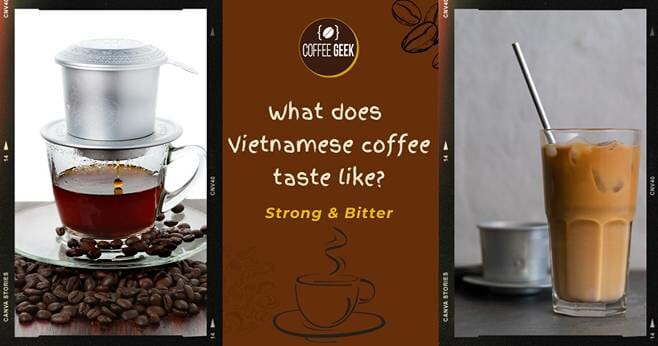
Another important aspect of Vietnamese coffee’s taste is its strength and bitterness. Typically brewed with dark roasted Robusta beans, it has a robust and earthy flavor that can be quite intense.
This strong and bitter, strong taste is balanced by the addition of sweetened milk condensed, which not only adds sweetness but also contributes to the unique, rich, and smooth qualities of this popular coffee.
When served hot or cold, Vietnamese coffee makes for a memorable experience due to its distinctive flavor and bold presence.
Types of Coffee Beans
Arabica Beans
Arabica coffee beans are less common in Vietnam but have been gaining popularity among some farmers.
Typically coffee beans grown at higher elevations and produce a more delicate and nuanced flavor compared to their robusta counterpart.
Arabica beans tend to have a sweeter, fruitier, and more acidic taste, which can be appealing to coffee enthusiasts looking for a more complex flavor profile.

Robusta Beans
Robusta beans are the predominant type of coffee bean grown in Vietnam, making up the majority of the coffee production in the country.
These beans are known for their hardiness, ability to grow at lower elevations, and strong, nutty, and dark flavor.
Vietnamese coffee made from robusta beans is often described as having a bitter and earthy taste, which some people compare to “burnt tires” and “dirt.”
However, robusta beans can also produce great tasting coffee when handled and roasted correctly.
A significant contributor to the unique taste of Vietnamese coffee is the traditional roast process, which may involve roasting the beans with rice wine, a pinch of salt, and butter.
This method of roasting can give the coffee a slightly oily texture and an intense flavor that sets it apart from other types of coffee.
Brewing Process
Phin Filter

The Phin filter is a traditional Vietnamese brewing method that requires minimal equipment and setup, yet produces a rich and flavorful coffee.
To use the Phin filter, start by rinsing it with boiling water to pre-heat and clean it. This step also helps the coffee grounds bloom better.
Next, add the desired amount of Vietnamese ground coffee to the brewing chamber, usually about 2-3 tablespoons.
Pour some boiling water (around 200 °F or 93 °C) over the coffee grounds and wait for it to bloom. This process takes about 20-30 seconds.
After that, pour the remaining boiling water over the coffee grounds and let it brew for 2-5 minutes until the coffee drips through the filter into the serving cup.
Vietnamese Coffee Filter
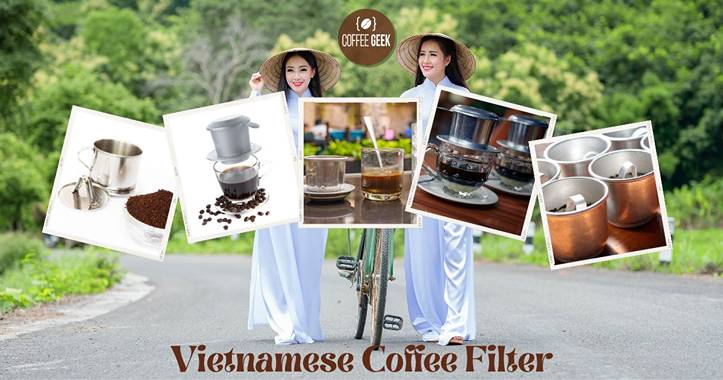
The Vietnamese Coffee Filter, or phin, plays a vital role in creating the unique taste of Vietnamese coffee. A Phin is a small metal device composed of a brewing chamber, a press, a cup that holds the coffee grounds and a lid.
The Phin filter allows the coffee to extract slowly, resulting in a concentrated and robust brew.
When using a phin, make sure to use dark roasted Robusta to achieve the strong, earthy flavor that’s characteristic of Vietnamese coffee.
French Press
Although the Phin filter is the traditional Vietnamese brewing method, you can also brew Vietnamese coffee using a French Press.
Keep in mind that this may slightly alter the taste, and it won’t be as authentic as using a phin filter.
To make Vietnamese coffee with a French Press, add 2-3 tablespoons of Vietnamese ground coffee to the French Press and pour boiling water over it (not cold brew).
Stir the mixture to ensure that all grounds are saturated, then place the lid and press onto the container.
Let the coffee steep for 4-5 minutes before pressing down the plunger and pouring the brewed coffee into a serving cup.
By using different brewing methods and equipment, such as the traditional Vietnamese Phin filter or a French Press, you can create a wide range of flavors and experiences when enjoying Vietnamese coffee.
Each method produces a distinct taste, and exploring these variations is a great way to better understand and appreciate Vietnamese coffee’s unique characteristics.
Popular Coffee Drinks
Traditional Vietnamese Iced Coffee

Cà phê sữa đá, also known as Vietnamese iced coffee, is a popular iced coffee drink that can be found in coffee shops throughout Vietnam.
Vietnamese iced coffee is made by combining bold, rich, and flavorful Vietnamese coffee with sweetened milk, and then pouring the mixture over ice.
The sweetened milk condensed adds a creamy sweetness to the drink, while the ice cools the strong coffee flavor, making it a perfect drinking coffee for a hot day.
Egg Coffee

Another unique Vietnamese coffee drink is the egg coffee, or ca phe trung. This sweet and dense beverage consists of a strong black robusta mixed with egg yolks and sweetened milk.
The egg yolks and milk are whipped together for approximately 10 minutes and boiled until a meringue-like consistency is achieved.
This egg foam is then poured over the hot coffee, creating a distinct and delicious drink that is both sweet and rich.
Bac Xiu
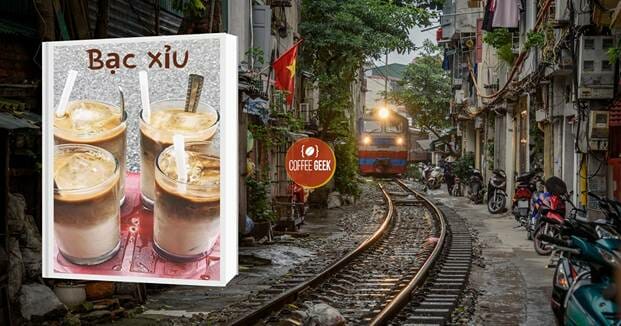
Bac Xiu is another coffee drink that locals love to enjoy. It combines coffee with coconut milk and cocoa, creating a unique blend of coconut coffee flavors.
To make Bac Xiu, Vietnamese coffee is first brewed, and then sugar, cacaco, and coconut milk are added to create a creamy and decadent iced milk coffee.
The addition of cocoa adds a touch of chocolate flavor, while the coconut milk provides a luscious, tropical twist that sets it apart from the traditional cà phê sữa đá.
Overall, these popular Vietnamese coffee drinks showcase the unique flavors and combinations found in Vietnam’s culture of coffee.
With each drink offering a different taste experience, there’s something for every coffee lover to enjoy.
Strength and Caffeine Content
Vietnamese coffee is known for its bold, rich, and intense flavor, which can be largely attributed to the type of beans used in its brewing process.
Unlike most coffee, which relies on beans Arabica, Vietnamese coffee predominantly features Robusta beans, known for their higher caffeine content and bitter taste.
The caffeine content in these beans is almost twice as much as that of Arabic beans, resulting in Vietnamese coffee being significantly stronger and more robust.
This higher caffeine content gives it a more pronounced, pungent taste. In addition to the beans, the unique brewing process and serving style contribute to the overall strength and flavor of Vietnamese coffee.
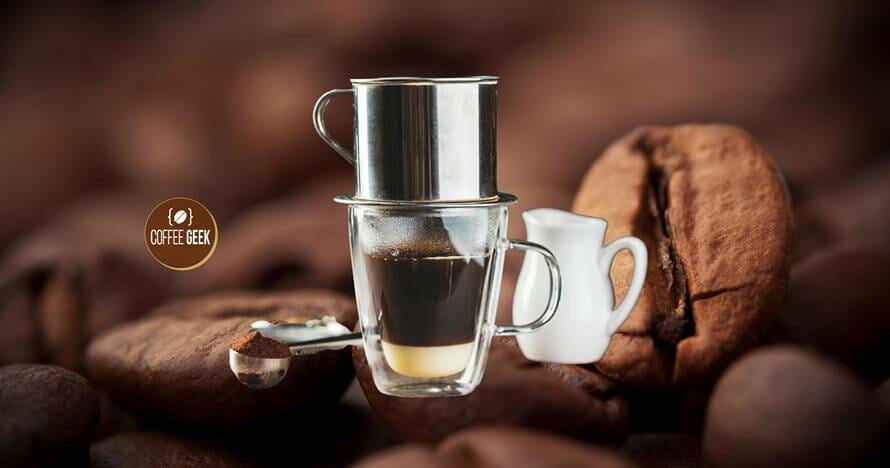
Moreover, Vietnamese coffee has a noticeably lower fat content than its conventional counterparts, as it usually omits dairy. This makes it not only a more potent choice but also a healthier one.
The caffeine-rich coffee certainly packs a punch, providing an intense burst of energy and making it an ideal choice for those who need a powerful pick-me-up.
In summary, the strength and caffeine content of Vietnamese coffee is influenced by the use of Robusta, which contain significantly more caffeine than other bean types.
The resultant coffee offers a distinct flavor and a potent jolt of energy.
This combination of bold taste and undeniable power make Vietnamese coffee a unique and popular option for coffee enthusiasts seeking a departure from more familiar brews.
| Aspect | Description |
|---|---|
| Flavor | Rich, bold, and intense with a pronounced coffee flavor. Often described as earthy and slightly smoky. |
| Sweetness | Typically sweet due to the use of condensed milk or sugar, providing a creamy, caramel-like sweetness. |
| Aroma | Aromatic with strong coffee notes, sometimes accompanied by hints of cocoa, vanilla, or roasted nuts. |
| Acidity | Generally low acidity, making the coffee smooth and mellow. |
| Body | Full-bodied and velvety, often described as thick and satisfying on the palate. |
| Texture | Creamy and silky, thanks to the addition of condensed milk or coconut milk in traditional recipes. |
| Strength | Vietnamese coffee can be quite strong, especially when brewed using a drip filter. |
| Temperature | Typically served hot or over ice, providing options for a refreshing iced coffee experience. |
| Balance | A well-balanced combination of coffee bitterness and sweet creaminess, creating a harmonious flavor profile. |
| Variations | Variations include egg coffee (cà phê trứng) and coconut coffee (cà phê cốt dừa), offering unique flavors. |
Coffee Culture in Vietnam
Vietnam is known for its unique and vibrant culture, which can be easily observed in its bustling cities – Hanoi and Ho Chi Minh.
From traditional family-owned establishments to modern hip cafes, Vietnam has become a hub for coffee enthusiasts.
Hanoi
As the capital city, Hanoi boasts a thriving coffee scene with a mixture of traditional Vietnamese shops and contemporary establishments.
In these quaint venues, visitors can experience the authentic taste of Vietnamese coffee brewed using the traditional Phin filter and dark roasted beans Robusta, which result in a thick, strong, and slightly bitter yet sweet drink often enjoyed with milk condensed.
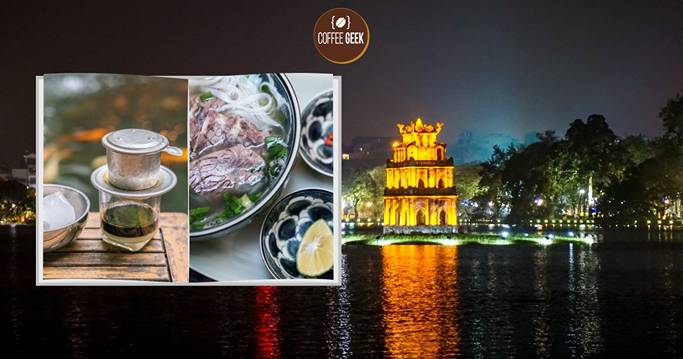
In Hanoi, locals often pair their coffee with a bowl of Pho, a staple Vietnamese cuisine. The culture in Hanoi is deeply ingrained in daily life, with cafes easily accessible throughout the city.
These venues serve as a popular spot for social gatherings, business meetings, and a momentary escape from the hectic pace of urban life.
Ho Chi Minh City
Much like in Hanoi, the culture in Ho Chi Minh is a reflection of the city’s dynamic nature.
As the largest city in Vietnam, Ho Chi Minh is host to an ever-growing Vietnamese coffee industry that caters to a diverse clientele.
Traditional shops of coffee, with their dark wood furniture and slow-drip coffee preparation methods, can be found alongside more
Western-style establishments serving lattes, cappuccinos, and other popular espresso-based drinks.
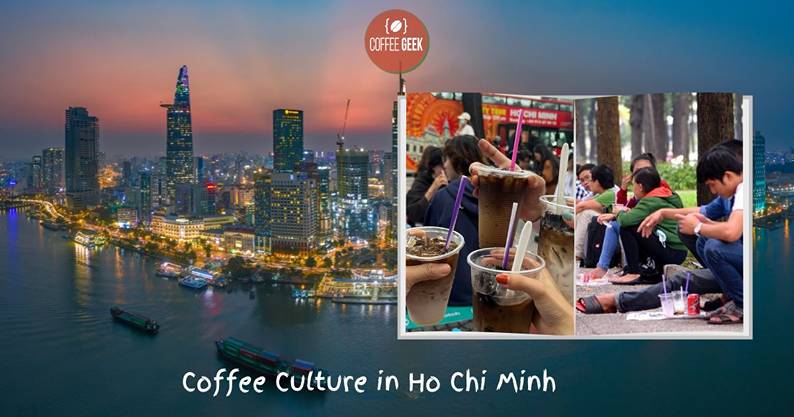
It is not uncommon to see people savoring their Vietnamese coffee while engaging in conversations or enjoying the city’s vibrant atmosphere.
The culture of coffee in Ho Chi Minh also extends to the many roadside vendors and stalls where locals can grab a quick caffeine fix.
These small stands serve as a testament to the importance of coffee in the daily lives of the Vietnamese, whether it’s a moment of quiet solitude or a time to laugh and connect with friends.
Flavor Influences and Complements
Vietnamese coffee boasts a bold and rich taste, with unique flavor profiles that set it apart from other varieties.
This coffee is commonly made using beans Robusta, which contribute to its distinct flavors and low acidity.
In this section, we’ll explore some of the key flavor influences and complements that you may find in Vietnamese coffee.
Notes of Dark Chocolate
Vietnamese coffee often has notes of dark chocolate as part of its flavor profile. This is likely due to the Robusta coffee beans’ natural characteristics.
Dark chocolate is a rich and complex flavor that adds depth to the coffee, making it a great pairing for sweets like cacao bread and muffins.
Vanilla
Another common flavor present in Vietnamese coffee is vanilla. This subtle addition brings a hint of sweetness to the coffee, balancing out the bitterness often associated with Robusta.
Vanilla complements the coffee’s other flavors and can sometimes be found as an ingredient in Vietnamese-style banh mi or enjoyed with a side of coffee-infused pastries.
Hazelnut
Hazelnut is another flavor that can be found in Vietnamese coffee. This nutty taste not only complements the coffee’s natural flavors but also adds a creamy texture.
Hazelnut can be enjoyed in a variety of ways, including as a spread for banh mi or mixed with the coffee for a delicious, velvety drink.
By integrating these flavors, Vietnamese coffee attains a taste that enthusiasts find both enticing and complex.
The rich and bold flavor profile, combined with an array of complementary notes, makes Vietnamese coffee a unique and enjoyable beverage experience.
Texture and Body
Milk and Smoothness
Vietnamese coffee is known for its unique combination of bold and intense flavors, which are often balanced by the addition of sweetened condensed milk.
The milk not only adds sweetness to the taste but also contributes to the coffee’s rich and smooth texture.
The use of condensed milk as opposed to regular milk or cream gives the coffee a thick, creamy texture that complements its strong flavor.
Low Acidity and Full-bodied
One of the key characteristics of Vietnamese coffee is its low acidity, which contributes to its smooth, buttery mouthfeel.
This is particularly notable in Vietnamese Arabica coffee, which has rich and vibrant notes of caramel, vanilla, and chocolate.
This low-acidity profile helps enhance the coffee’s complex taste while making the beverage more enjoyable for those who prefer a milder flavor in their coffee.
Vietnamese Robusta coffee, on the other hand, is considered quite strong, with a full-bodied and intense flavor.
This coffee variety is typically twice as potent as beans Arabica, and its bold taste is also accompanied by hints of nuts and earthiness.
Despite its intensity, Robusta coffee still maintains a certain smoothness, which is attributed to its medium full-bodied roast.
In summary, every cup of Vietnamese coffee offers a delightful experience, showcasing its rich and lively notes, smooth texture, and lower acidity.
Combined with its signature use of sweetened condensed milk, Vietnamese coffee provides an interesting, enjoyable, and delicious adventure for any coffee lover.
Conclusion
Vietnamese coffee has a distinct flavor profile, originating from the use of robusta coffee beans grown in Vietnam.
These beans have a strong, earthy taste and bold quality, making Vietnamese coffee unique compared to other coffee varieties.
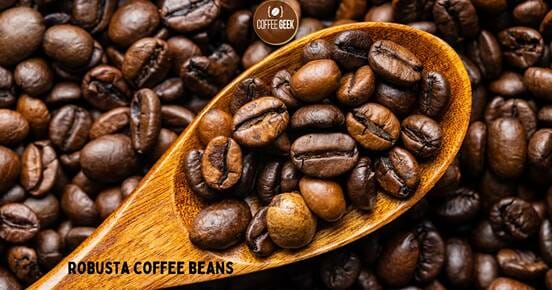
One interesting aspect of Vietnamese coffee is the brewing process using a French drip filter called a Phin.
This results in a strong, concentrated coffee that is often sweetened with condensed milk, adding a touch of natural sweetness to the beverage.
Some specialty coffee shops even offer unique variations of Vietnamese coffee like Vietnamese egg coffee, where an egg yolk and sugar mixture are added to create a rich and frothy texture.
The combination of high-quality robusta coffee beans and local traditions, such as adding salt and rice wine during the roasting process, adds to the unique flavor of Vietnamese coffee.
It is worth noting that, while robustas are more commonly used, some regions in Vietnam also produce Vietnamese beans arabica.
It has a slightly different flavor, giving coffee amateurs even more varieties to explore.
Within Vietnam and beyond, Vietnamese coffee’s bold taste and individuality have gained popularity among coffee lovers.
Its distinct flavor and the use of both traditional and modern brewing methods make it a favorite choice for those who appreciate a strong, earthy, and naturally sweet coffee experience.
Frequently Asked Questions
What makes Vietnamese coffee unique?
Vietnamese coffee is known for its bold, rich, and incredibly flavorful taste.
Its uniqueness comes from the brewing process, which involves a Phin (Vietnamese coffee filter) and dark roasted Robusta Coffee beans (which are of the less caffeinated Arabica coffee plant variety) source.
Why does it have a chocolaty flavor?
The chocolaty flavor of Vietnamese coffee can be attributed to the type of beans used.
The Arabica beans from Da Lat, a city in Vietnam’s central Highlands, are known to produce a full-bodied coffee with hints of caramel, vanilla, and a light chocolatey taste source.
Is Vietnamese coffee sweeter than others?
Vietnamese coffee is often served with sweetened condensed milk, which can make it taste sweeter than other types of coffee.
The bitter taste of the Robusta Coffee beans is balanced by the sweetness of the condensed milk source.
What type of beans are used in Vietnamese coffee?
Vietnamese coffee primarily uses dark roasted beans Robusta that are grown in the country.
The best Vietnamese Arabica coffee comes from Da Lat, which is known for its medium roast and flavorful taste source.
How strong is the taste of Vietnamese coffee?
The taste of Vietnamese coffee can be described as bitter, sweet, and thick source. Its strong flavor comes from the dark roasted Robusta Coffee beans used and the unique brewing process.
Which brands are popular for Vietnamese coffee?
There are several popular brands that produce Vietnamese coffee, such as Trung Nguyen, Highlands Coffee, and Vinacafe.
Each brand offers a variety of coffee blends and flavors that cater to different preferences source.

